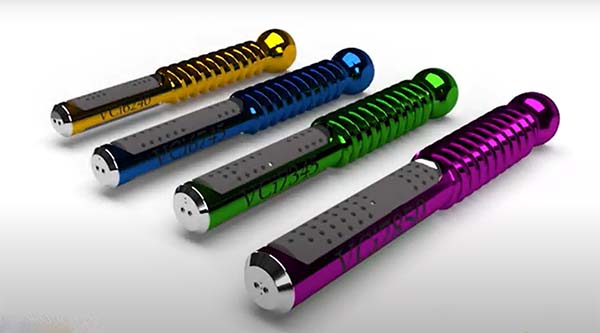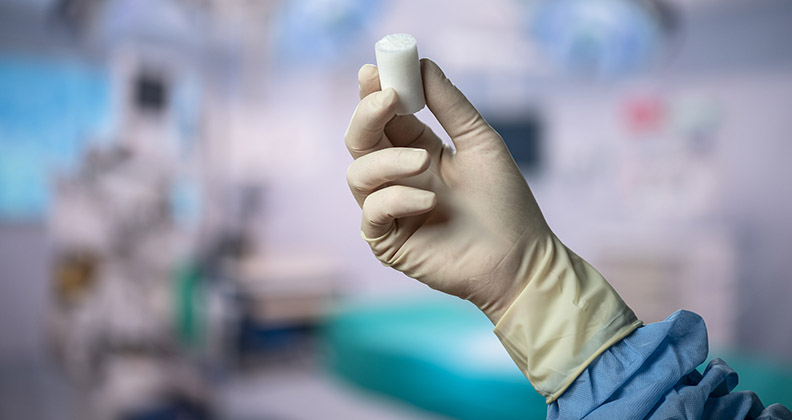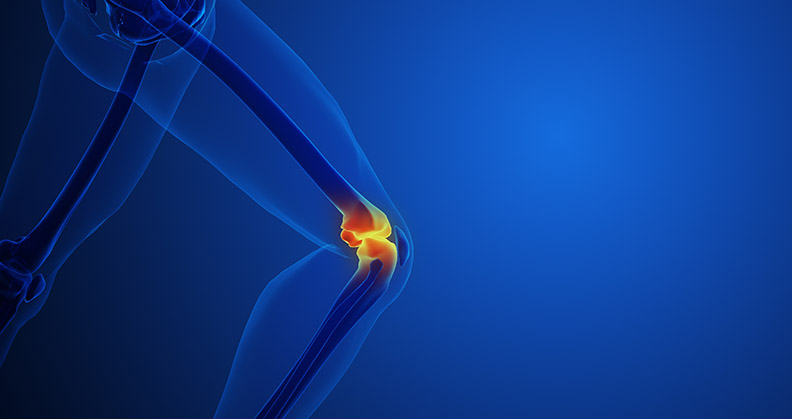
In October 2021, Amber Implants announced that its VCFix spinal system had received a Breakthrough Device Designation from FDA. The company’s spinal implant is designed to offer an alternative treatment for vertebral fractures, a complex injury treated with bone cement.
Identifying a Need for Spine Implants
Mohammad Ahmadi, Ph.D., and Banafsheh Sajadi, Ph.D., are co-founders of Amber Implants. When asked to explain how the idea for their technology emerged, they pointed to years of research.
“My Ph.D. topic at Technical University of Delft was about the mechanics of meta-biomaterials used for bone substitution,” Dr. Ahmadi said. “In my research, we used additive manufacturing to make different porous (meta) biomaterials for orthopedic implants. These materials mimic the bone structure and properties, and therefore, help to avoid many of the complications of the traditional orthopedic implants.”
Over six years of orthopedic implant research during his Ph.D. and postdoc education, Dr. Ahmadi became aware of treatment gaps within the industry. Identifying these gaps inspired him to develop a platform for an expandable bone replacement implant that would stimulate natural bone healing.
Dr. Sajadi also received her Ph.D. degree from the Delft University of Technology. She began working with Dr. Ahmadi with the shared goal of exploring applications for the technology. The pair founded Amber Implants in The Netherlands in 2019. Dr. Sajadi serves as CEO, while Dr. Ahmadi is CFO.
“Surprisingly, we found out that for vertebral fractures, the current solutions are far from ideal,” Dr. Sajadi said. “In order to develop VCFix, we did not focus on improving the current available technologies, but instead started from the drawing board and researched what has to be done for an ideal treatment, and then we made it happen.”

Dr. Mohammad Ahmadi and Dr. Banafsheh Sajadi founded Amber Implants in 2019.
Targeting Vertebral Compression Fractures
The current treatments that are available for vertebral compression fractures involve injecting synthetic polymeric cement to promote bone stabilization and pain relief. The VCFix spinal system is reportedly the first solution to treat vertebral fractures that does not rely on bone cement.
According to Dr. Ahmadi, half of patients who undergo bone cement procedures experience complications.
“As a result, many insurance companies are reluctant to pay for it, and some doctors are only prescribing bed rest and braces. In Europe alone, two-thirds of vertebral fractures went untreated this year. On the other hand, Medicare data shows that the patients who do not get treated have a 50% higher risk of death in one year after the fracture,” he said. “If you add up these numbers, it is clear that we are dealing with a real problem.”
Amber Implants sees their product as a solution to this problem. They aim to leverage their technology to reduce treatment-related complications to a minimum.
“Such a system, with the ability to be used with and without posterior fixation, and with and without bone cement, will ultimately replace the traditional treatments of not only osteoporotic vertebral compression fractures but also a wide range of more severe spinal injuries which are common for the elderly population,” Dr. Ahmadi predicted.

Amber Implants uses additive manufacturing for its VCFix device. The perforated structure stimulates bone ingrowth as a more natural healing process.
Utilizing Additive Manufacturing
Additive manufacturing is critical in producing the VCFix system.
“We use additive manufacturing (selective laser melting) for making the sophisticated expandable structure of the VCFix implant, which is positioned in the vertebral body for fracture reduction,” Dr. Sajadi said. “This technique has allowed us to optimize the design for maximum anatomical height and angle restoration, maximum mechanical strength, and also maximum osseoinductivity.”
“VCFix features a sophisticated implant made of one of the strongest titanium alloys. It not only stabilizes the fracture and relieves the pain, but also stimulates the natural bone healing without the need for any syntenic polymeric cement,” Dr. Ahmadi added. “We made this product compliant with posterior fixation operation and, therefore, for more unstable fractures. The VCFix implant can be fixed to the adjacent vertebrae using rods and pedicle screws.”
VCFix’s 3D-printed perforated structure stimulates bone ingrowth as a more natural healing process. Additionally, it provides better stability and better distribution of loads in the spine.
Moving to Market
The founders of Amber Implants describe their recent FDA Breakthrough Designation as a huge opportunity to perfect their product before commercialization.
“Receiving the FDA Breakthrough Designation is a tremendous recognition that will boost our efforts to bring VCFix to patients,” Dr. Sajadi said. “This development speeds up our timeline significantly. We expect our First In Human clinical trial to commence in 2022. The trial will take us one step closer to improving the quality of life of patients with vertebral fractures with our proprietary VCFix.”
Amber Implants recently announced that they closed a $10 million Series A financing round. The capital will be used to advance the company through its clinical trial.
PM
Patrick McGuire is a BONEZONE Contributor.




